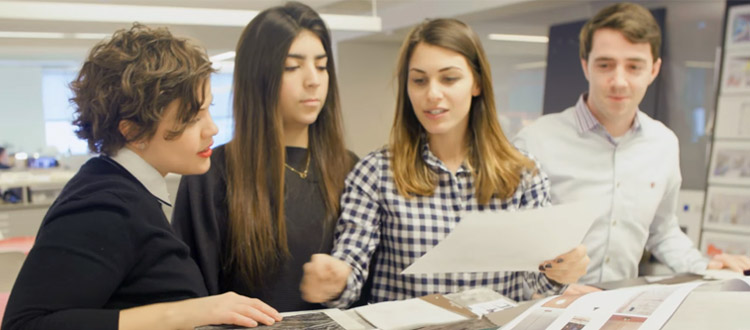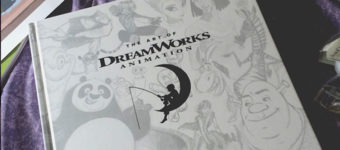What is an Art Director & What Do They Do?
An art director can be and do a lot of things. But generally the art director is in charge of the visual artistic elements in a production. This could be a film, play, animation, or anything else creative where artistic visual effects are used.
Think of the art director kind of like the visual director of a movie: but instead of directing actors, they direct artistic elements and visual pieces in a project.
It’s a broad job title and it sounds awesome.
“Art” implies creativity and “director” sounds important and creative as well. And it is!
Art directors get to work on some pretty incredible projects.
Companies of all sizes hire art directors to turn their projects into something unforgettable. But what does an art director actually do? Is an art director the same as a creative director? How does one become an art director?
Let’s take a closer look at what an art director is and does, and how you could break into the field.
What Does An Art Director Do?
The art director usually works with directors of other departments and the head of the project to make sure that the creator’s vision is realized.
They do this by working closely with the overall director and figuring out the best way to translate their intentions into a visual format.
An art director has to have the artistic skills to understand how to make the project director’s vision a reality.
They have to know how to translate the targeted mood and message into things like color, texture, shape, style, and other elements of art and design, and then relay that information to the art team.
This means the art director stays in touch with the project director while working with the design team, approving designs created by the art team, and then presenting those designs to the project director.

Often times the main project director will have a mood or idea they’re going for, but they don’t really know exactly how to communicate that visually. That’s where the art director comes in.
Depending on the size of the company and the team, the art director might interact with several other departments like the set design department, the graphic design team, or the marketing and advertising team.
Smaller companies, on the other hand, might put the art director in charge of all visual elements and require them to function as the head of several departments.
They must do all of this while meeting deadlines and working within a project’s budget.
In smaller companies the art director might even be in charge of creating those budgets and production schedules on top of everything else.
That’s a lot to juggle!
Here are a few industries that employ art directors:
Product design: Usually the art director is involved in designing product packaging. They often create the major design concept, like the message and tone of the package, as well as manage others on the art team like graphic designers and typographers.
Book publishing: The art director oversees the design of the cover, the typography, interior layout, and any illustrations.
Print magazines: The art director manages page layout, typography, and any other visual aspects such as photography or icons or branded graphics.
Advertising: Most of the time in advertising agencies you’ll find that art directors make sure the client’s message comes across in the visuals by working with designers. This can include every step of the ad’s design process like type, logos, photography, ad layout, etc.
Theater and film: The art director(and by extension, the art department) is mostly responsible for sets in film and theatrical productions, even though there are many other departments that require visuals and creative work. It gets even broader when we talk about animation & video game design since art directors become responsible for the entire visual style and the creative team like vis dev artists & character designers.
Art Director vs Creative Director
This is a common question: Is an art director and a creative director the same thing?
The answer: Nope!
There may be a lot of overlap between the two depending on the industry and size of the project, but these are two different roles.
A creative director is a more general job title and covers all creative aspects of a project, not just the visual ones. Any company, project, or industry might have creative directors in the wings.
But art directors are usually only found in film, animation, gaming, publishing, and advertising.
Some industries and bigger companies usually have both!
Major film studios usually work with both creative directors and art directors because there are so many creative and visual elements to keep track of. They also tend to have the budget for it.
As an art director, the creative director might be your boss and collaborate with you on visual aspects of the project. The creative director works with the heads of all other creative departments just like the art director works with heads of all visual departments.
A creative director interacts not only with the art director, but also with writers, sound designers, and video editors.
Required Skills
An art director must have strong creative and artistic skills on top of organizational skills.
This job involves a ton of communication between the art director and the project director, between the art director and the art department, and between the art director and any other creative departments involved in the project.
The art director needs to be able to understand and discuss ideas with the project director and then turn around and clearly explain everything to the art team ten minutes later.
They need to be able to visualize concepts before any visuals have been created.

They usually start from scratch to develop an idea visually with nothing but a few words of description from the client or director. Or they need to oversee that creation process, like a character designer who works under an art director.
It’s also important to have a strong understanding of the medium being used, whether it’s graphic design or set building, so the art director knows how to translate ideas visually while working within the limits of their medium(and their team).
If you’d like to eventually become an art director you’ll need a set of skills unique to whatever industry you’re in: animation, storyboarding, character design, set design, interior design, illustration, what have you.
So How Does One Become An Art Director?
That’s the big question.
It’d be nice to say it’s a simple matter of getting a degree and applying for a job, but it’s not.
This is a higher position that’s sought after by many creative. It requires knowledge, skills, and years of experience in the field. Not to mention connections.
You need great communication skills, a killer portfolio, and demonstrable managerial skills to work your way up the ladder.
So how do most working art directors do it?
Most art directors usually start by earning a foot in the door somewhere on a creative team. This will vary with each industry, but it’s crucial to work on the ground floor of creative projects and work under other art directors to see what they do.
The people who climb up to art director spent years honing their craft, building their portfolios over the years, often starting in entry level positions.
Working in the field long enough puts them in touch with producers, directors, and other professionals who recommend and even hire them in the future.

Your resume and your portfolio are proof of your expertise, so building those up should be your first priority.
If you want to be an art director for film or theater then get experience by working for smaller, lower budget productions and building up your portfolio. Make some connections along the way and let it be known you’d want to get into the art side of production.
You can even fill your portfolio with your own ideas on your own time, or be your own art director for a small project you create.
Leadership skills are crucial for art director roles. If you can create your own project from scratch it shows you’ve got the gusto to make it.
Also don’t be afraid to connect with other directors in your industry. You’ll be able to learn from them and meeting people is where a lot of opportunities come from.
Meet art directors one-on-one if you can. Talk to them about their work and ask what it takes to get there.
Is it easy to become an art director? No.
It takes a ton of work and experience, but if it’s something you’d really want to do then the work is part of the fun!
If this career sounds like your dream job then start building your portfolio today.
Find awesome projects to work on.
Or make your own.
Show the industry what you’ve got and learn everything you can. Someday you just might see your name under “art director” in a movie’s end credits.












